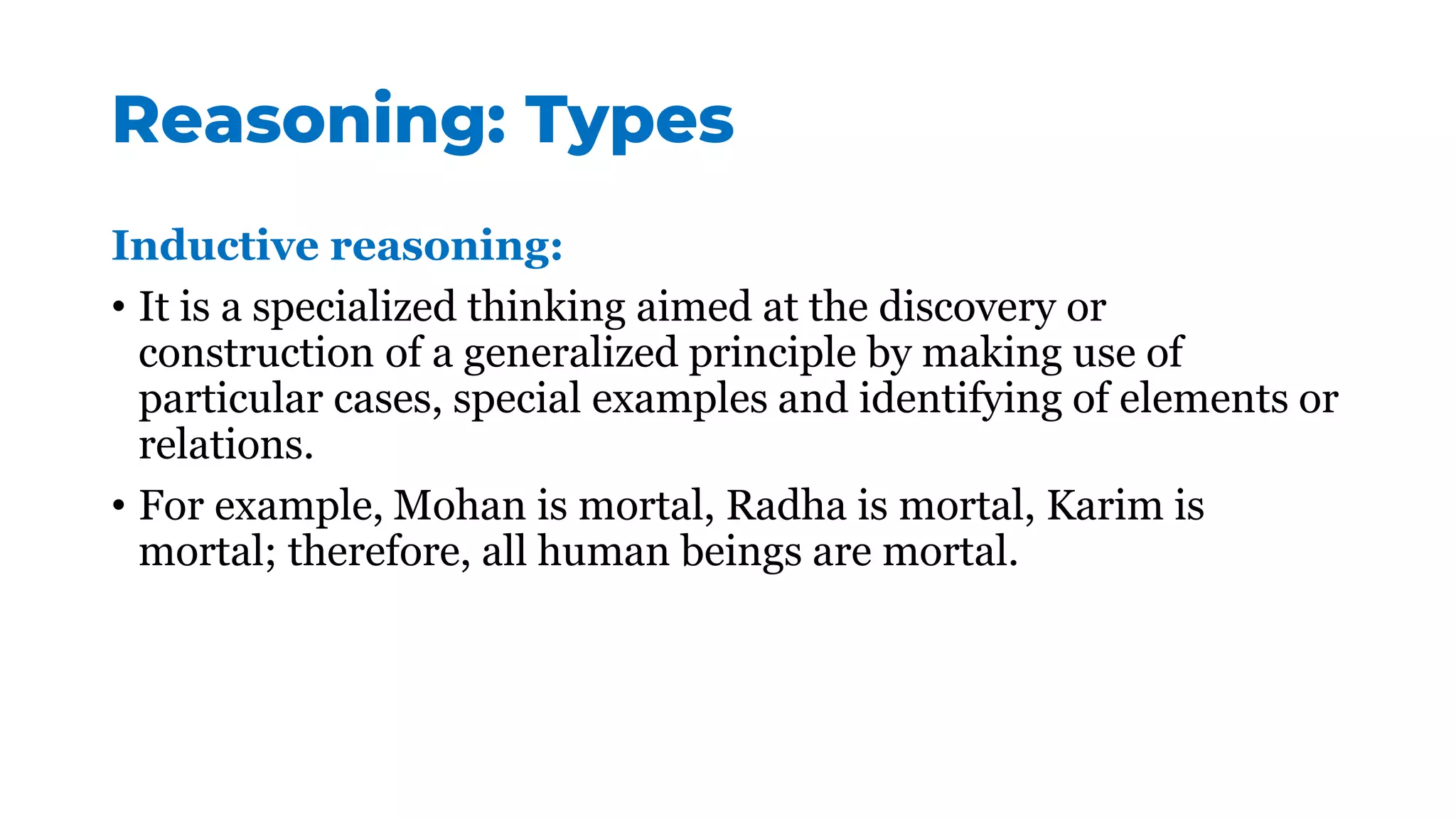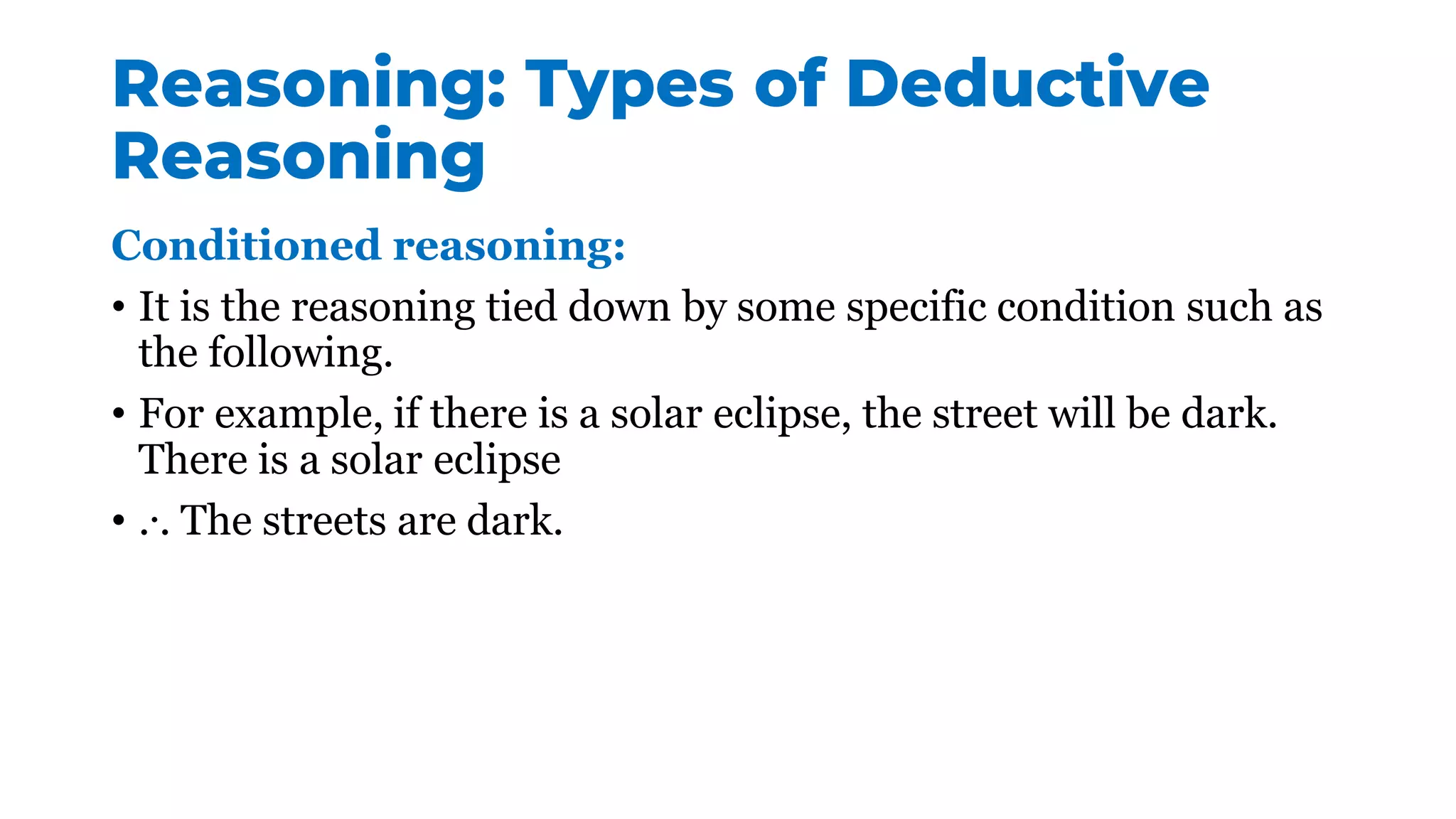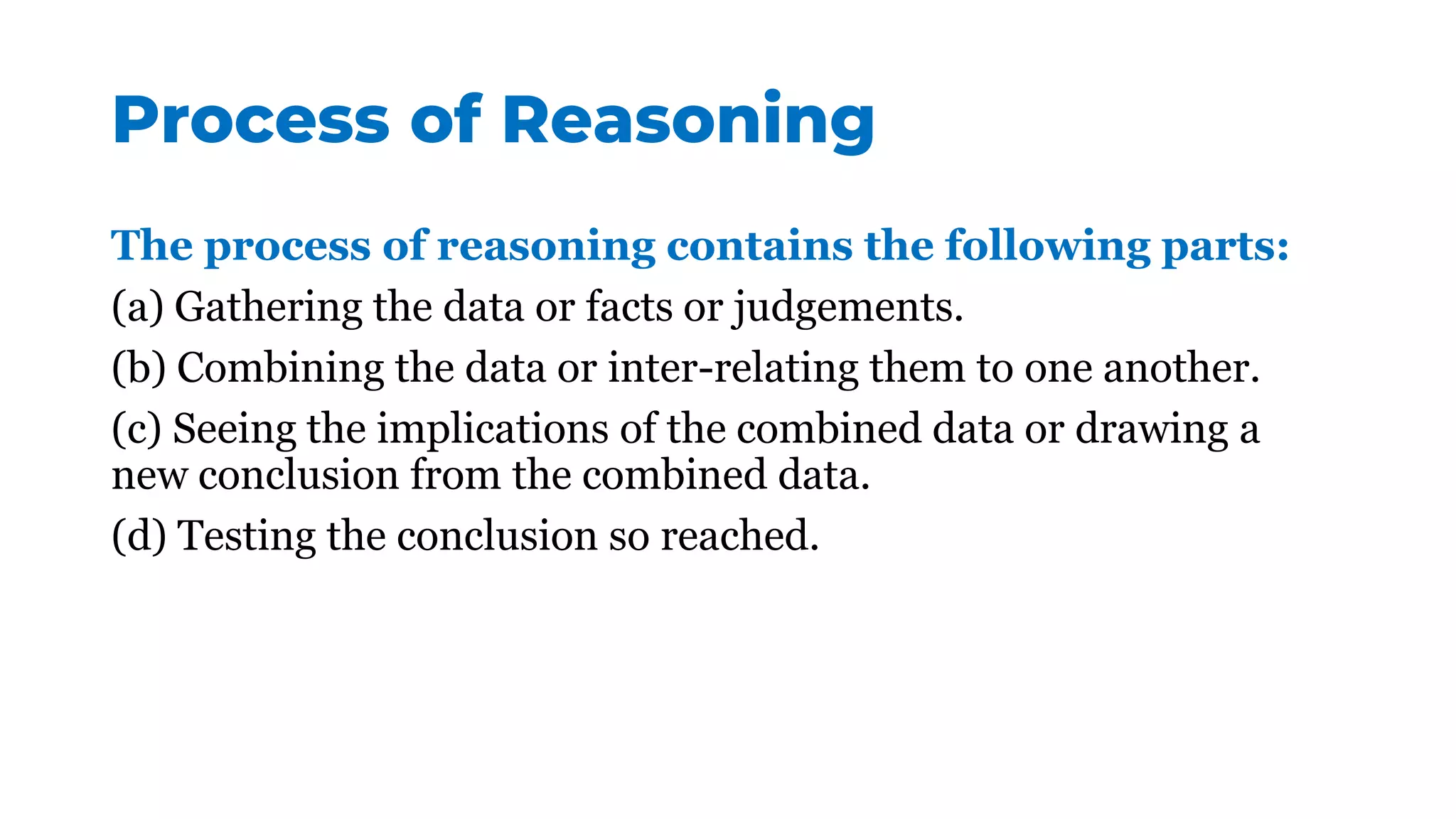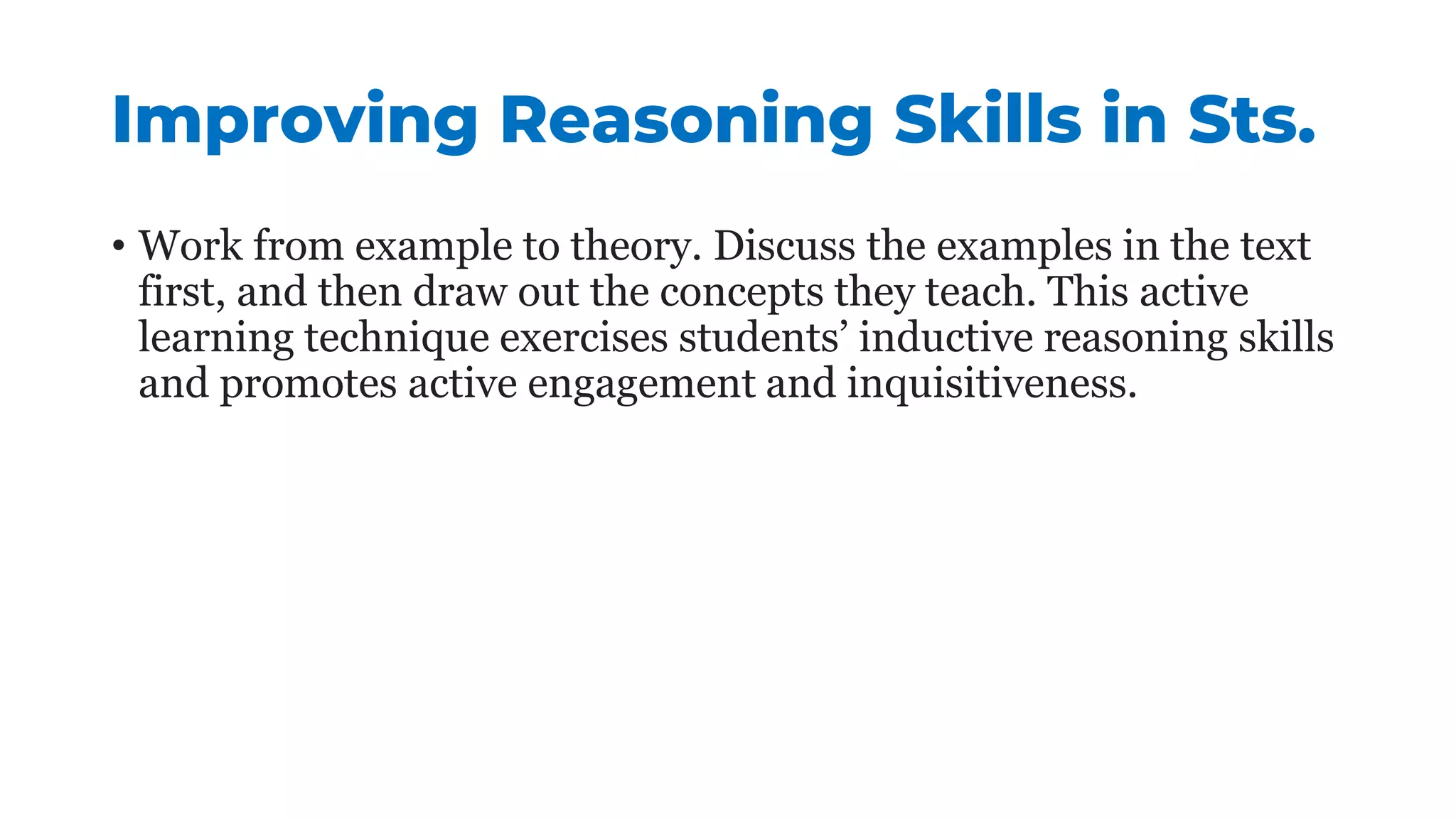The document discusses reasoning, defining it as purposeful, controlled thinking involving cause-and-effect relationships. Reasoning is described as typical thinking that finds new relationships among recalled facts and involves symbolic mental exploration rather than physical exploration. Reasoning is distinguished from trial-and-error behavior and seen as a conative tendency driven by curiosity. Types of reasoning discussed include inductive, deductive, conditioned, and categorical reasoning. The process of reasoning is outlined as gathering data, combining and relating data, seeing implications, and testing conclusions. Strategies are provided for improving students' reasoning skills.




















